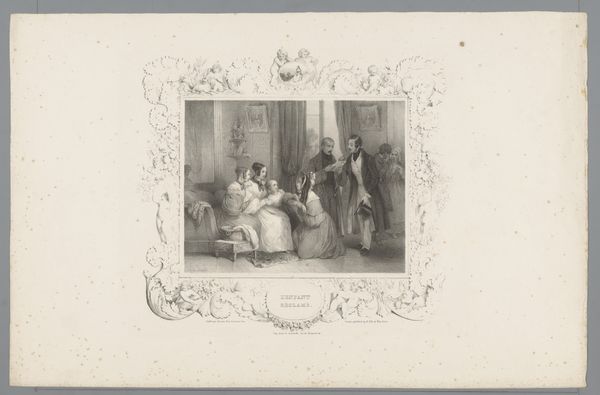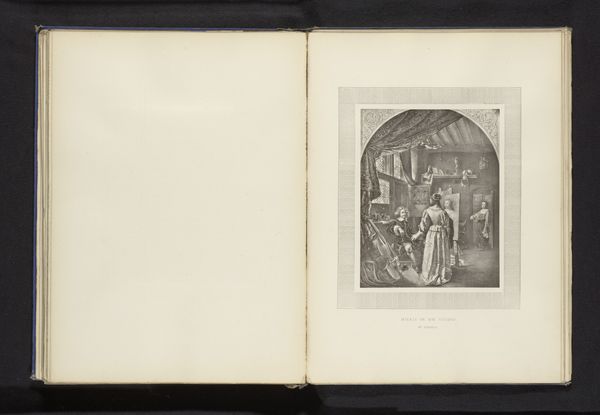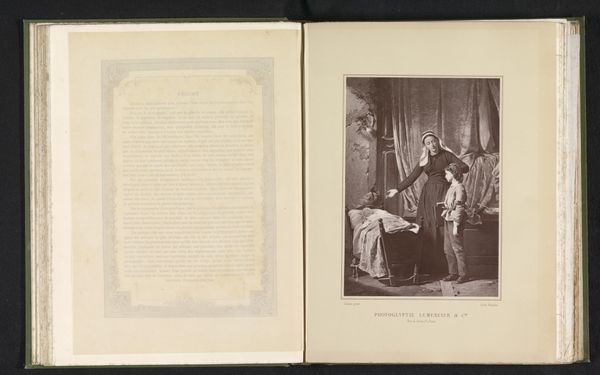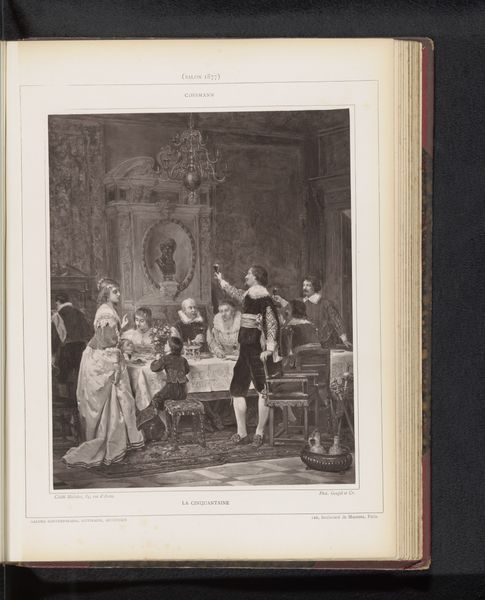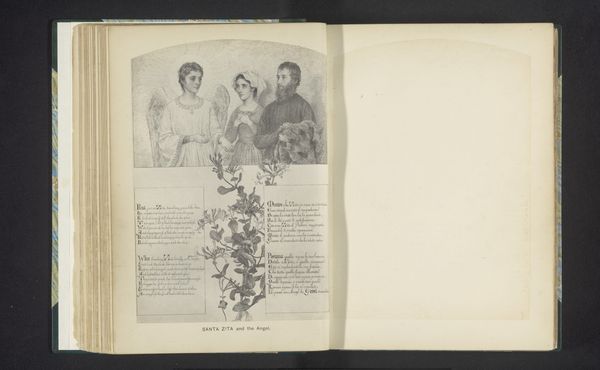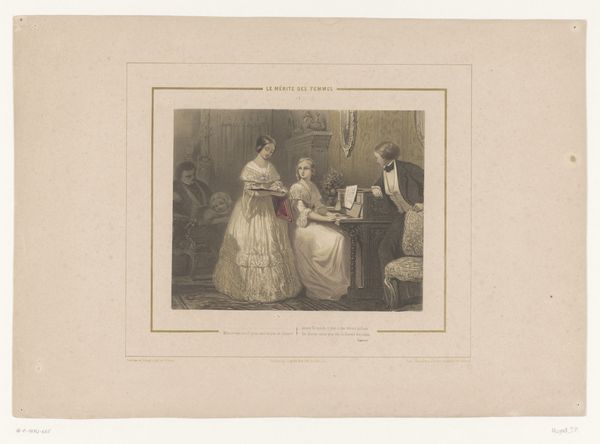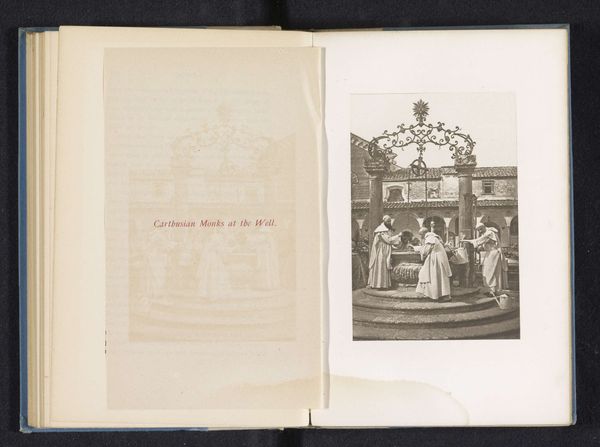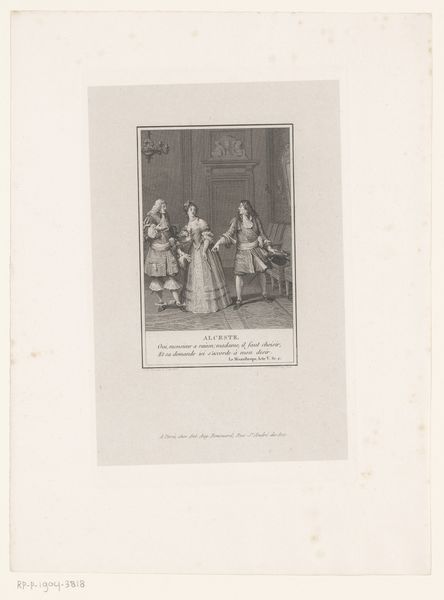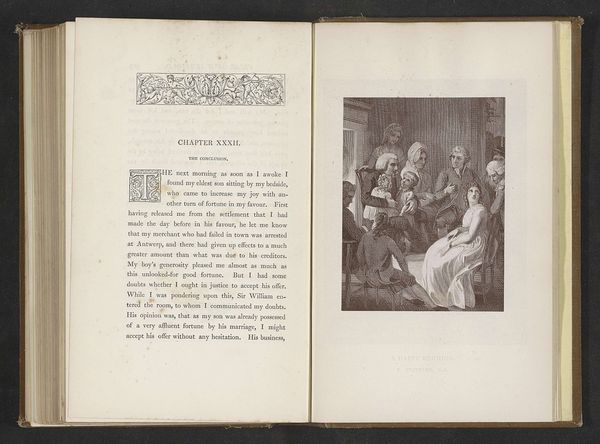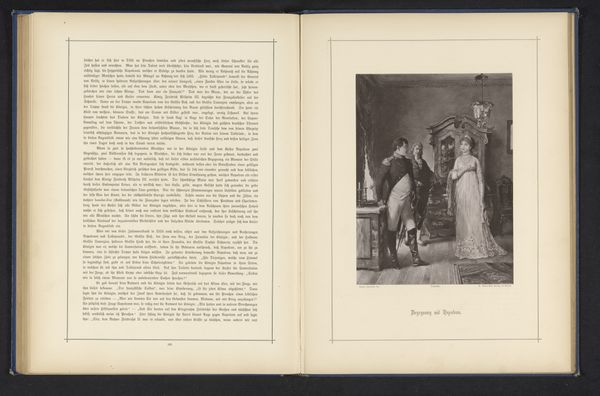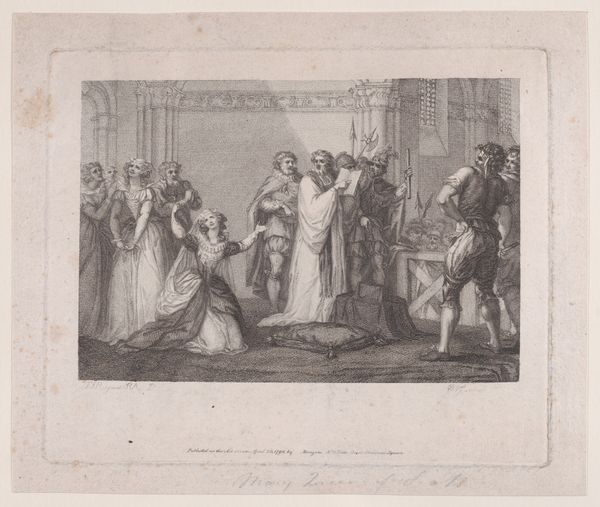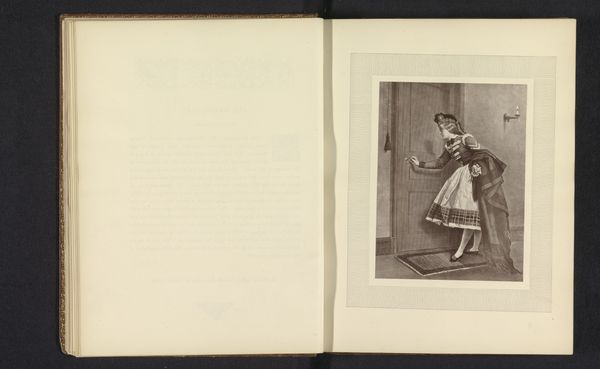
Fotoreproductie van een schilderij, voorstellende een groep mensen verlaat een kerk before 1881
0:00
0:00
print, etching, photography
# print
#
etching
#
photography
#
group-portraits
#
genre-painting
#
academic-art
#
realism
Dimensions: height 258 mm, width 173 mm
Copyright: Rijks Museum: Open Domain
Curator: Here we have a photographic reproduction of a painting, crafted before 1881 by an anonymous hand, titled "Fotoreproductie van een schilderij, voorstellende een groep mensen verlaat een kerk", or "Photographic reproduction of a painting, depicting a group of people leaving a church." The original artwork, if known, and this photographic impression now resides here at the Rijksmuseum, created through printmaking, specifically etching. Editor: The visual dynamics strike me immediately. A congregation spills out from a cathedral in what seems to be carefully staged chaos. Is it just me, or is there a performative quality, an unveiling or departure? The figures seem to consciously posture for the painter's eye. Curator: That resonates with what might be an intention to construct a certain vision of community, framed by and exiting from a sacred space. Consider that churches historically stood not just as houses of worship, but also as communal hubs shaping identity and cultural memory. It speaks volumes about power, ritual, and social order. Editor: Absolutely, it is an ordered, perhaps idealized view. What stories does the image obscure or omit, who wasn't welcomed into the sanctuary? We must consider whose experiences were purposefully absent from this narrative. The exclusion from communal ritual spaces translates to social and political exclusion in many ways, even today. Curator: Let us examine the composition. The etching appears precise. It evokes the visual style of academic art while engaging the everyday through a genre-painting sensibility, and there’s this striking realism in how the individuals are represented. This melding suggests a deliberate balancing of social documentation with formal artistic values. How might it impact our perception of the scene? Editor: This blend reinforces the elite gaze of the time, naturalizing their customs and social roles, reinforcing those cultural hegemonies that we're now interrogating. But beyond that, I notice this strange passivity amongst them all—what could they represent? Curator: Perhaps something of faith’s social impact within nineteenth-century life. These aren't just any people, right? If we decode it symbolically, this crowd of parishioners may serve as a broader metaphor about the congregation's influence. These subtle indicators within artwork can serve as keys unlocking the collective mindset. Editor: A useful lens for interpretation. Curator: Indeed, these historical snapshots provide endless conversations. I value this time spent reflecting on how tradition has played out in representation, in our stories. Editor: I agree—looking critically at art is about asking who is included, excluded, or rendered invisible— and asking ourselves what we'll include moving forward.
Comments
No comments
Be the first to comment and join the conversation on the ultimate creative platform.
